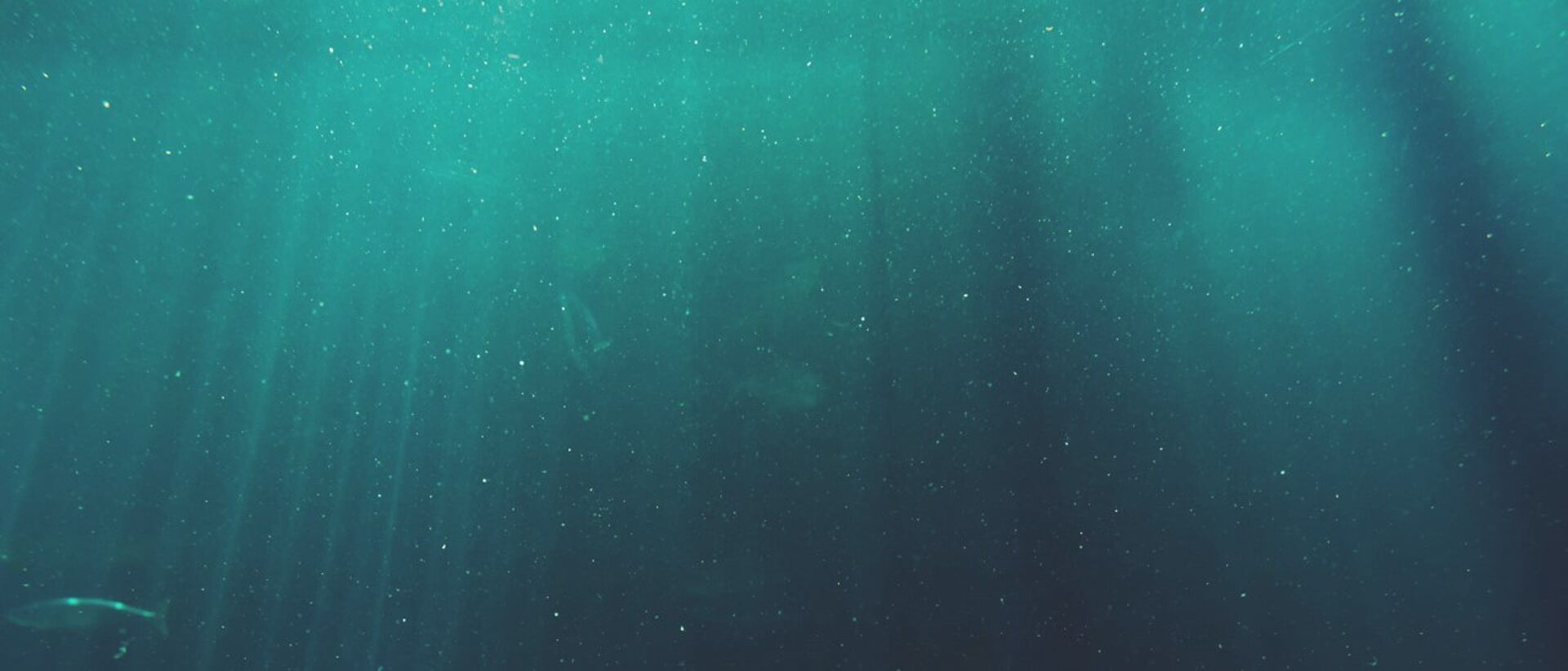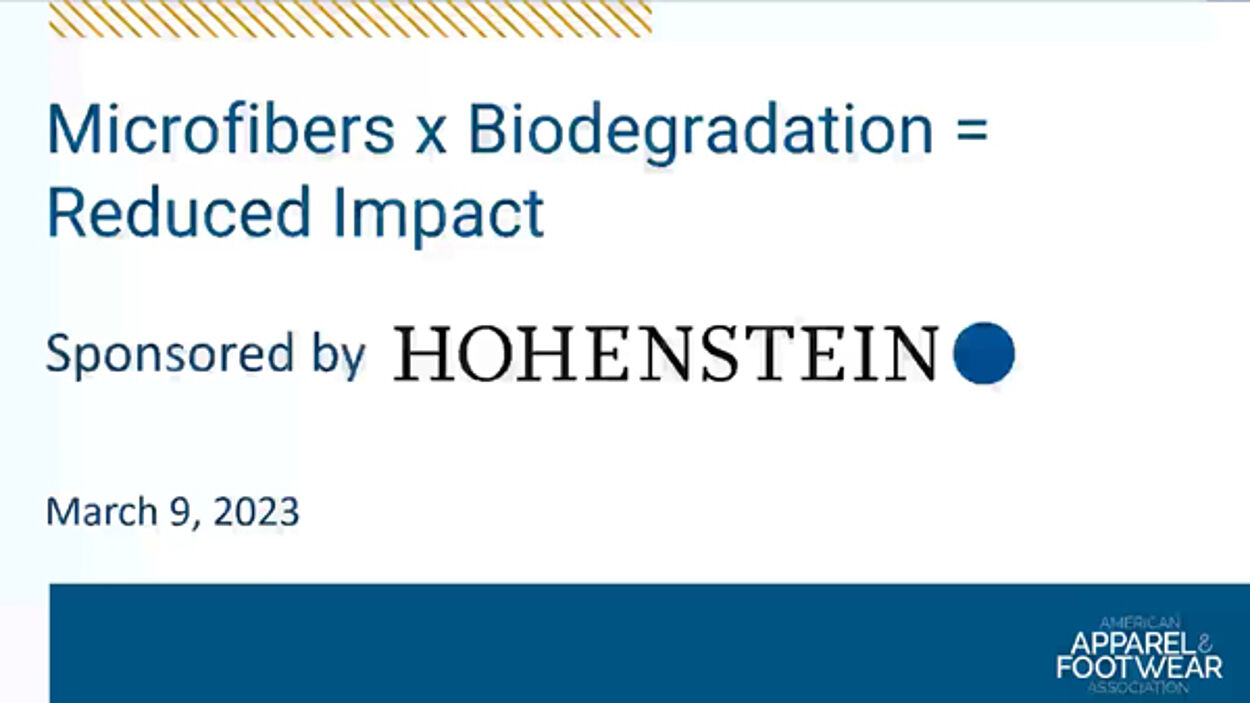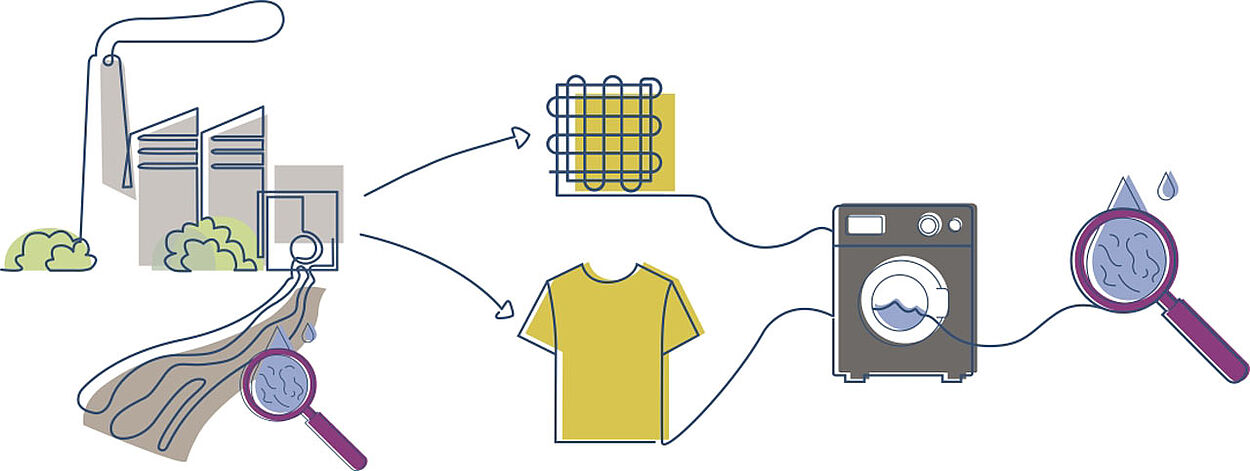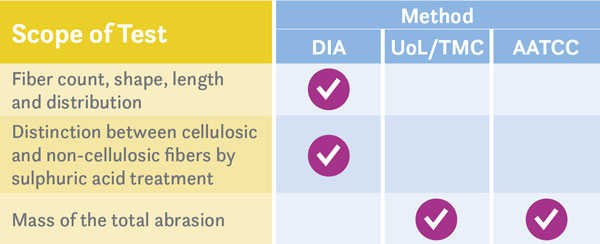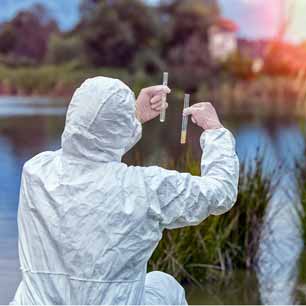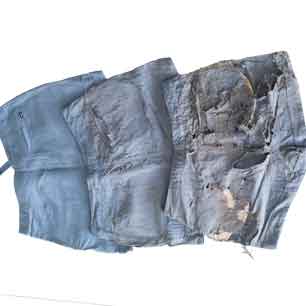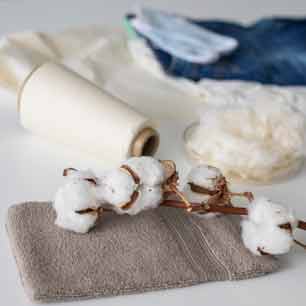Testing and Analysis for DIN SPEC 4872
- Classification of the fiber discharge during washing
Using dynamic image analysis (DIA), we assess fiber release from textiles. - Biodegradability testing of fiber residues in wastewater (ISO 14851)
This method measures the degree of biodegradation over a defined time period. The controlled conditions and data empower better understanding, comparisons and development of materials. - Ecotoxicity testing of fiber residues after biodegradation (ISO 20079)
This test evaluates ecotoxicological effects—or environmental impact—on higher aquatic plants, using duckweed as a sensitive model organism.
